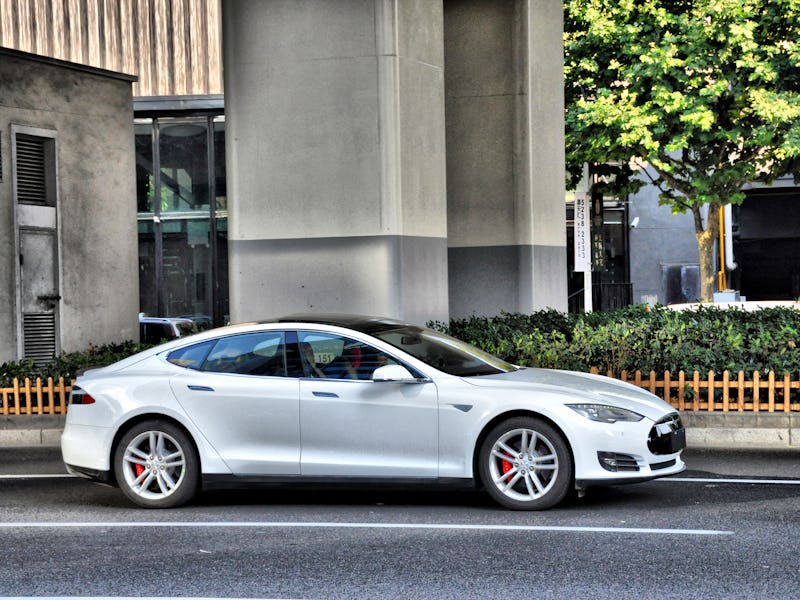Ever wondered what’s inside a Tesla battery cell?
Well, don’t do what this guy did in a pair of videos from ARIES RC. Opening lithium-ion batteries is a ticklish business. They contain carcinogens, caustic acids and flammable chemicals that shouldn’t be handled without gloves, if at all. But whatever damage the video host may have done to his own health, there’s no harm for us in watching.
In the first video, the gentleman cracks open an 18650 battery cell, of the type that Tesla and Panasonic jointly developed for Models S and X. As several commenters indignantly noted, this is not a scientific analysis, as our host displays little understanding of chemistry, electricity, or the metric system. It’s just a rough-and-ready teardown, for fun.
The inside of a cylindrical battery cell consists of three thin sheets of material rolled up in what’s technically known as a “jelly roll.” The anode and the cathode are the two electrodes between which electrons flow. A separator between the anode and cathode prevents them from touching, while allowing ions to pass through.
These three sheets don’t look like much - a dirty piece of foil, a brittle sheet of black crud (in fact, a lithium carbonate mix on a thin sheet of aluminum), and what our genial host describes as “a simple plastic wrap.” However, they are anything but simple. In fact, these wafer-thin leaves may represent some of the most complex and highly engineered materials ever devised by humanity. There are entire companies that specialize just in making separators, and scientists who have spent entire careers tweaking the chemistries of anode and cathode, in order to eke out a little more performance, lower cost and higher safety.
Tesla’s cells have often been described in the press as “laptop batteries,” and in fact the Roadster did use off-the-shelf cells. However, beginning in 2010, Tesla and Panasonic collaborated to optimize their cylindrical cells for the higher reliability and safety requirements of automotive applications.
As JB Straubel somewhat testily explained in a 2013 interview, the 18650 cells used in Models S and X are unique. “We’ve totally custom-engineered that cell working jointly with Panasonic to create…an automotive cell, tested to automotive standards.”
For Model 3, Tesla and Panasonic developed a new, slightly larger cell, the 2170 (cells are named for their dimensions - the 18650 has a diameter of 18 mm, whereas the 2170 is 21 mm). “It’s a cubic function, so it effectively ends up being, from a geometry standpoint, maybe one third more energy per cell,” Elon Musk explained. The chemistry has also been changed, yielding greater energy density, so the total capacity of each cell is considerably higher. Naturally, Tesla hasn’t revealed any details of what changes it made, but it’s widely assumed that it has added more silicon to the anode.
In a recent video, our friend from ARIES RC rips open one of the new 2170 cells (this time he’s wearing gloves). Naturally we find the same basic jelly roll design, but there are several differences - only a scientist could explain just what these imply, but it’s plain that Tesla has made some significant changes to the cell design. Another thing that’s apparent even to the layperson, in both cell formats, is the incredible precision of the engineering. From the tab welding used on the electrodes to the tiny vent holes at the top of the cylinder, this is the highest of high tech.
Article originally published on evannex.com by Charles Morris. EVANNEX offers aftermarket accessories, parts, and gear for Tesla owners. The Florida-based company also maintains a daily blog on the latest Tesla news.
